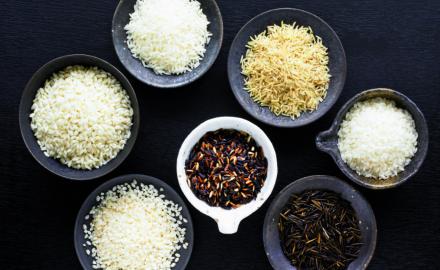Ginger
GINGER IN ALL ITS FORMS
A plant of Asian origin, ginger (Zingiber officinalis) is mainly grown in India, China and Indonesia. It can be bought fresh, dried, confit, powdered, crystallised.... It is the rhizome (the underground stem) that is used in both pharmacopeia and cooking. The rhizome can be of varying size and colour depending on the variety. Highly pungent and aromatic, ginger pulp has a strong peppery flavour with a hint of lemon and gives off a strong pungency in the mouth due to its concentration of gingerol. Ginger’s taste and intensity varies depending on the point at which it is added to the recipe.
GINGER IN COOKING AND BAKING
Ginger is a pivotal spice in Asian cooking! It adds its unique flavour to marinades, soups and fish dishes and lifts fatty meats (it is often used with pork and duck). In Japan, sushi and sashimi are served with a “gari"—ginger marinated in rice vinegar, water and sugar—that refreshes the palate between two mouthfuls of raw fish. A nice paradox for a plant known for its heat!
In the West, ginger is mainly used in sweets and baked products. Ginger is what gives English gingerbread its instantly recognisable taste, and is also delicious when added to chocolate or a fresh fruit salad. In cooking, ginger is used in sweet and sour recipes (such as steak with honey and ginger), Asian dishes (beef with ginger and garlic) and, of course, to spice up white fish, with which it goes perfectly. Its delicate flavour lifts salads of grated carrot or cucumber to another dimension. Ginger is also widely used in cold or hot drinks (such as tea). Ginger beer, a fizzy drink made using fresh ginger, has been brewed in Jamaica since the very beginning of the 18th century and differs from ginger ale, a ginger-flavoured soda, in that it has a stronger taste. Ginger’s peppery notes provide the zing in the highly refreshing Cucumber Ginger Fizz, a mix of vodka, cucumber, lemon, soda water and ginger ale, and in Summit, a cocktail made from brandy, thin strips of fresh ginger, limes and lemonade.
EXCEPTIONAL HEALTH GIVING QUALITIES
Known for its anti-emetic (antinausea) properties, this spice has a host of other qualities i.e. anti-inflammatory, digestive, anti-migraine, anti-cholesterol...
In the 12th century, the nun Hildegarde de Bingen ate powdered ginger for its revitalizing properties. Its power as an aphrodisiac, however— notably celebrated by Pliny the Elder and Avicenna—is more likely myth than sound scientific fact*. What Madame du Bary, who regulary concocted gingerbased love philtres for her various lovers, would have thought? And what would say the Senegalese people, who are in the habit of tying tubers to their waists to stimulate the desire of their spouses? sed


